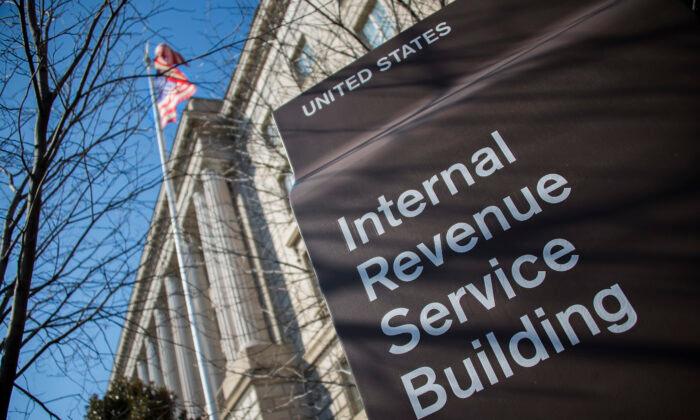Dear Carrie: When I did my taxes this year, I wound up owing a lot to the IRS. A friend at work mentioned they got a huge tax refund. How can I get a refund next year?—A Reader
Dear Reader: The end of tax season always brings a host of questions from readers. Mostly, they boil down to “How can I pay less in taxes?” or “How can I get a bigger refund?” Many readers don’t realize that these are two very different questions.
Tax Refunds and Tax Rates
I’ve discussed before why getting a big tax refund isn’t the best thing, but I want to remind readers that a refund doesn’t mean you’re paying less in taxes. A tax refund simply means that you gave the government a zero-interest loan the prior year. The bigger your refund, the more money you lent.In the same way, having to pay taxes when filing doesn’t mean you’re paying more in taxes. It just means you had less withheld than you owed during the prior year.
Check Your Withholding
To make sure you’re not overpaying or underpaying, check to see if you have the right amount of taxes being withheld from your income via the IRS Tax Withholding Estimator. You can also make quarterly estimated tax payments to the IRS if you don’t have taxes withheld from your income.Understand Deductions
Recent tax-law changes increased the standard deduction ($12,400 for single taxpayers and $24,800 for married filing jointly in 2020), reducing the number of people who will itemize deductions like mortgage interest. As a result, it’s more important than ever to take advantage of every tax strategy, including contributing to tax-advantaged accounts when you can.Maximize Contributions to Tax-Advantaged Savings Accounts
One surefire way to reduce your tax bill is to take advantage of tax-advantaged accounts. Making tax-deductible contributions to traditional IRA, 401(k), 403(b), and 457(b) accounts can reduce your taxable income dollar for dollar.Roth contributions don’t provide a tax deduction upfront but still provide tax-deferred growth and the potential for tax-free earnings for qualified distributions after age 59 1/2.
If you have access to a Health Savings Account (HSA), you get the advantage of 100 percent deductible contributions, tax deferral, and tax-free distributions for qualified health care expenses now or any time in the future. Saving and investing in an HSA can be a great tax move.
Don’t forget, at the end of the calendar year, individuals 50 and older can make extra “catch-up” contributions of $1,000 to an IRA and $6,500 to 401(k)/403(b)/457(b) plans. Individuals 55 and older can make catch-up contributions to an HSA of $1,000/year.
Get (Tax) Credits
Another important step is to take advantage of tax credits. Tax credits are more valuable than tax deductions because deductions only reduce the amount of your income that is subject to tax, but credits are a dollar-for-dollar offset against tax liabilities.There are tax credits available to all types of taxpayers covering a wide range of expenses and situations. Some of these credits may not apply or may be phased out based on your filing status or income, but it’s worth your time to do some research.
- Earned Income Tax Credit: a tax break for lower-income families with children. The average amount of EITC received nationwide was about $2,500 in 2019.
- Child and Dependent Care Credit: up to $3,000 for each qualifying child or dependent, or $6,000 for two or more.
- Retirement Saver’s Credit: up to $2,000 in government “matching funds” in the form of a saver’s credit to help low earners save more in a 401(k), 529 ABLE or IRA.
- American Opportunity Credit (AOTC) and Lifetime Learning Credit (LLC): These credits help with the cost of higher education. The AOTC is up to $2,500 per eligible student, and the LLC is up to $2,000 per tax return. You can claim both AOTC and LLC credits on the same return but not for the same student or the same qualified expenses.
- Premium Tax Credit (Affordable Care Act): If you purchase health insurance through one of the exchanges created by the Affordable Care Act, you may qualify for this tax credit to lower the cost of health insurance.
Tax Strategies
Besides the benefits of tax-advantaged accounts and deductions and credits discussed above, the following strategies may help lower the amount of taxes you pay:- Bunching deductions: Certain deductions like charitable contributions and medical expenses are allowable if you are able to itemize them. By bunching deductions in a particular year, rather than paying for them over multiple years, you may be able to increase your likelihood of being able to itemize these costs and lower your taxes.
- Tax-loss harvesting: If you have investments that have lost money in taxable accounts, you may be able to use those losses to offset capital gains. In addition, if you have any losses remaining, you can deduct up to $3,000 of the loss to offset ordinary income each year. Any remaining losses can be carried forward into future years.
- Gifting: Gifting appreciated stock or income-producing assets to charities or individuals in a lower tax bracket may save you on taxes and allow you to gift more.





